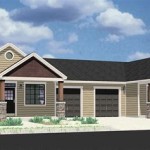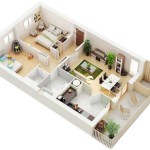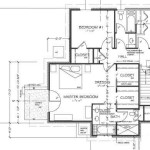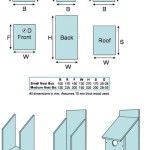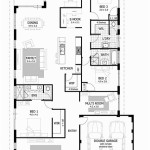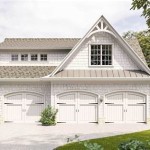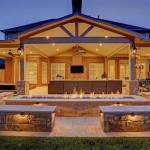Modern 3 Bedroom House Plans in Kenya: A Comprehensive Guide
The demand for modern 3-bedroom house plans in Kenya is steadily increasing as more individuals and families seek contemporary living spaces that balance functionality, aesthetics, and affordability. These house plans offer a practical solution for comfortable living, incorporating modern design principles and catering to the specific needs of the Kenyan lifestyle. This article provides a detailed overview of modern 3-bedroom house plans in Kenya, exploring key design considerations, popular architectural styles, and factors influencing cost and construction.
Designing a modern 3-bedroom house plan requires careful consideration of various factors, including the size and shape of the land, the orientation of the house, and the desired layout. The goal is to create a space that is both visually appealing and highly functional. Key elements of modern design often incorporated into these plans include open-plan living areas, large windows for natural light, and seamless transitions between indoor and outdoor spaces. Emphasis is also placed on energy efficiency and sustainable building practices.
The versatility of 3-bedroom house plans allows for a wide range of architectural styles, enabling homeowners to choose a design that reflects their personal preferences and complements the surrounding environment. Understanding the nuances of these plans is crucial for making informed decisions during the planning and construction phases.
Key Design Considerations for Modern 3-Bedroom House Plans
Designing a modern 3-bedroom house plan in Kenya necessitates a thorough evaluation of several design principles to ensure optimal functionality and aesthetic appeal. These considerations directly impact the livability and value of the home.
Space Planning: Effective space planning is paramount. The layout should maximize the use of available square footage while ensuring a comfortable flow between different areas of the house. Open-plan living areas, which combine the living room, dining area, and kitchen, are a popular feature in modern designs. This creates a sense of spaciousness and encourages social interaction. The bedrooms should be strategically located to provide privacy and quiet, often grouped together in a separate wing of the house or positioned away from high-traffic areas. The placement of bathrooms and utility areas should also be carefully considered for convenience and efficiency. Circulation paths need to be well-defined to avoid congestion and create a smooth flow throughout the house.
Natural Light and Ventilation: Maximizing natural light and ventilation is crucial for creating a healthy and comfortable living environment. Large windows and strategically placed openings allow sunlight to penetrate deep into the house, reducing the need for artificial lighting during the day. Proper ventilation helps to regulate indoor temperature and prevent the build-up of moisture and stale air. The orientation of the house should be optimized to take advantage of the sun's path, providing ample light in the morning and avoiding excessive heat gain in the afternoon. Cross-ventilation, achieved by placing windows and doors on opposite sides of the house, is an effective way to promote airflow. Skylights and clerestory windows can also be used to bring natural light into areas that are otherwise difficult to illuminate.
Material Selection: The choice of building materials plays a significant role in the overall look and feel of the house, as well as its durability and energy efficiency. Modern designs often incorporate a mix of materials, such as concrete, steel, glass, and wood, to create visual interest and texture. Sustainable and locally sourced materials are increasingly popular, as they reduce the environmental impact of construction and support local economies. The selection of roofing materials, flooring, and finishes should also be carefully considered, taking into account factors such as cost, durability, and maintenance requirements. High-quality materials can significantly enhance the aesthetic appeal of the house and increase its long-term value.
Outdoor Living Spaces: Integrating outdoor living spaces into the design is a key element of modern 3-bedroom house plans in Kenya. Patios, balconies, and verandas provide opportunities for relaxation, entertainment, and connection with nature. These spaces can be designed as extensions of the indoor living areas, creating a seamless transition between the interior and exterior. Landscaping plays an important role in enhancing the aesthetic appeal and functionality of outdoor living spaces. Trees, shrubs, and flowers can provide shade, privacy, and visual interest. Outdoor kitchens, fireplaces, and seating areas can further enhance the usability of these spaces, making them an integral part of the home.
Popular Architectural Styles for 3-Bedroom Houses in Kenya
Several architectural styles are commonly adopted for modern 3-bedroom houses in Kenya, each offering a unique aesthetic and functional appeal. The choice of style often reflects the homeowner's preferences, the surrounding environment, and budgetary constraints.
Minimalist Style: Minimalist architecture emphasizes simplicity, clean lines, and functionality. This style is characterized by the use of basic geometric shapes, neutral colors, and minimal ornamentation. Minimalist 3-bedroom house plans typically feature open-plan living areas, large windows, and a focus on natural light. The exterior is often characterized by a flat roof, simple cladding materials, and minimal landscaping. The interior is uncluttered and organized, with a focus on functionality and efficiency. This style is well-suited for those who appreciate a clean, modern aesthetic and value simplicity in their surroundings.
Contemporary Style: Contemporary architecture is a constantly evolving style that reflects the latest trends and technologies in design and construction. Contemporary 3-bedroom house plans often incorporate a mix of materials and textures, asymmetrical shapes, and bold architectural features. Large windows, open floor plans, and seamless transitions between indoor and outdoor spaces are common elements. This style is often characterized by innovative use of space, sustainable building practices, and a focus on energy efficiency. Contemporary designs can be highly customized to reflect the homeowner's individual preferences and lifestyle.
Ranch Style: Although traditionally a single-story design, the ranch style can be adapted to create modern 3-bedroom houses in Kenya. Ranch-style homes are characterized by their low-pitched roofs, horizontal emphasis, and large windows. Modern ranch designs often incorporate open floor plans, updated materials, and energy-efficient features. This style is well-suited for those who prefer a more traditional aesthetic but want to incorporate modern elements. Ranch-style homes are often built on larger lots, allowing for ample outdoor living space and landscaping.
Bungalow Style: Bungalow-style homes are characterized by their low-pitched roofs, wide eaves, and prominent front porches. Modern bungalow designs often incorporate open floor plans, updated materials, and energy-efficient features. This style is well-suited for those who appreciate a cozy and inviting atmosphere. Bungalow-style homes are often built in suburban or rural areas, where they blend seamlessly with the surrounding landscape.
Factors Influencing the Cost and Construction of 3-Bedroom Houses
The cost of constructing a modern 3-bedroom house in Kenya can vary significantly depending on several factors. Understanding these factors is essential for creating a realistic budget and managing expenses throughout the construction process.
Materials: The choice of building materials has a significant impact on the overall cost of the project. High-quality materials, such as imported tiles, premium fixtures, and durable roofing, will increase the cost but can also enhance the aesthetic appeal and longevity of the house. Locally sourced materials are often more affordable and can reduce transportation costs. Sustainable materials, such as bamboo and recycled wood, can be a cost-effective and environmentally friendly option. The cost of materials can also fluctuate depending on market conditions and availability.
Labor Costs: Labor costs are a significant component of the overall construction budget. The cost of labor can vary depending on the skill level of the workers, the complexity of the design, and the location of the project. Hiring experienced and qualified contractors and subcontractors is essential for ensuring quality workmanship and avoiding costly mistakes. It is important to obtain multiple quotes from different contractors before making a decision. Paying fair wages and providing a safe working environment can help to attract and retain skilled workers.
Design Complexity: The complexity of the design directly impacts the cost of construction. Intricate designs with unusual shapes, custom features, and specialized materials will require more skilled labor and specialized equipment, increasing the overall cost. Simpler designs with clean lines and standard materials are generally more cost-effective to build. It is important to balance aesthetic preferences with budgetary constraints when choosing a design. Working with an experienced architect or designer can help to optimize the design for cost-effectiveness without compromising functionality or aesthetics.
Location: The location of the project can also influence the cost of construction. Building in urban areas typically involves higher land costs, stricter building codes, and increased transportation costs for materials and labor. Building in remote areas can present challenges related to access to utilities, skilled labor, and materials. Soil conditions and topography can also impact the cost of site preparation and foundation work. Conducting a thorough site assessment before starting construction is essential for identifying potential challenges and mitigating risks.
Finishes and Fixtures: The selection of finishes and fixtures, such as flooring, lighting, plumbing fixtures, and appliances, can significantly impact the overall cost of the house. High-end finishes and fixtures, such as granite countertops, stainless steel appliances, and designer lighting, will increase the cost but can also enhance the aesthetic appeal and functionality of the house. Standard finishes and fixtures are often more affordable and can still provide a comfortable and stylish living environment. It is important to set a budget for finishes and fixtures and stick to it throughout the construction process.
By carefully considering these factors, prospective homeowners can make informed decisions about the design, materials, and construction methods to create a modern 3-bedroom house that meets their needs and budget.

Modern 3 Bedroom House Plan For Nakuru

House Plans In Kenya The Concise 3 Bedroom Bungalow Plan David Chola Architect

Simple Three Bedroom House Plans To Construct On A Low Budget Co Ke

Modern 3 Bedroom House Plan For Nakuru

Three Bedroom Bungalow House Design In Kenya 3d Muthurwa Com Simple Small Modern Plans

3 Bedroom House Plans And Cost In Kenya 2024 Urban Rural Rates To Co Ke

3 Bedroom House Plan A005 Plans Design Kenya

Simple 3 Bedroom House Plan For A Small Family In Kenya Muthurwa Com Plans Bungalow Design

3 Bedroom House Without Garage In Kenya Bungalow Floor Plans Layout

3 Bedroom House Plans And Cost In Kenya 2024 Urban Rural Rates To Co Ke
Related Posts

